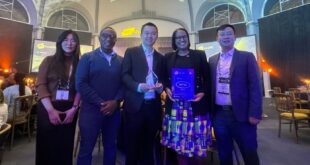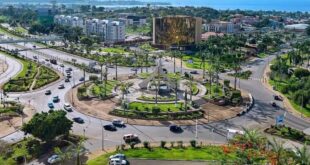
Bole, Ghana – Bole based Nkilgi 103.7Fm, has stumbled on a petition by some members pf the Savannah Region Coordinating Committee (names withheld) to the Chairperson of the Technical Committee for the Determination of Regional Capitals at the Ministry of Regional Reorganization and Development to make Fufulso in the Central Gonja District as capital of the the newly created Savanna Region. The petitioners added maps to back their case.
Read the full petition below:
Dear Sir/Madam,
Petition for Selection of Fufulso as the Capital of the Savannah Region
We members of the Savannah region Coordinating Committee, with the support of a majority of people from each of the six districts of the Savannah region wish to request the Technical Committee on the Determination of Capitals of the six newly created regions to seriously consider Fufulso in the Central Gonja district as the capital of the Savannah region. Fufulso is a small town in the very centre of the Savannah region Fufulso, if selected as the capital will offer, not only the Savannah region, but Ghana as whole an opportunity to plan and develop a modern regional capital town from scratch; at location devoid of existing buildings and other infrastructure. An opportunity to design a well zoned town that separates commercial, industrial, administrative and other areas from residential areas; with planned and well thought out waste disposal facilities and road network, among other infrastructural facilities. It will serve as model for town planning and development in Ghana.
Facts & Considerations
- Fufulso is the most central town/area in the Savannah region.
Location – It is located on the main highway linking Northern Ghana to the South of Ghana through Kumasi and Kintampo to Tamale and yonder; and it is where the Sawla – Fufulso road through Damongo links up with the North – South highway. Fufulso is currently 16 minutes drive, south-west of Yapei, where most important meetings of Gonja chiefs were held in the early 1900s to define, shape and lay the foundation of the Gonja Kingdom as we know it today. Yapei was chosen as the venue for all these meetings because of the relative centrality of its location so that chiefs from all corners of Gonja would not be disadvantaged by distance and travel time to the meetings. (Yapei, called or referred to as Tamale Port, was the most developed town in Central Gonja.
- History – The foundation of the Gonja Kingdom as we know it today was laid in a series meeting, all held in Yapei in early 1900s under the auspices of the British Colonial Administration. The British Colonial Administration convened a number of very important meetings, namely the 1914 Palaver at Yapei, the 1923 Gonja Conference and the 1930 Constitutional Conference. Decisions made and agreements reached, particularly at the last two conferences, were profound in as far as the unification and re-establishment of the Gonja kingdom is concerned.
It was at the 1923 Conference that the over lordship of the Yagbonwura over all of Gonja was re-established and the seed for a united Gonja Kingdom, sown. The 1930 Conference provided Gonja with a codified constitution entitled ‘Enquiry into the Constitution and Organization of the Gbanya Kingdom’ (Government Press 1932); which among other important provisions include the list of chiefs qualified to ascend to the Yagbon skins and the established rotational succession system that has served us so well for all these years; ensuring peaceful successions in Gonja at all levels.
Yapei was seen by the British Colonial Administrators as the Centre of the Gonja Kingdom, and rightly so, and it had even proposed at the 1930 conference that the capital be moved from Nyanga to Yapei – to reduce the distance between the capital and the more populous East Gonja as one of the justifications; a position much favoured by the East Gonja chiefs. But for the resistance of the then Yabgonwura, Yagbonwura Mahama (of Bole), Yapei would have by the now been the capital of the Gonja Kingdom.
- Transportation – The proximity of Fufulso to Buipe, Damongo and Tamale, coupled with its being on the main highway linking Southern Ghana to the North (the N10), makes the movement of people, goods, and services much easier and cost efficient. – Fufulso is only an hour and half’s drive from Buipe; a transportation hub – easily accessible by Road and Water transport. The main highway linking Southern Ghana to Northern Ghana passes through Buipe (the Gateway to the North), the Inland port for river transport, through which bulkiest goods and supplies including fuel are brought to Northern Ghana and to some of the Sahelian countries (Burkina Faso, Mali, Niger, etc.) on the Volta lake, terminates at Buipe and the proposed railway line from Kumasi to Paga passes through Buipe. Fufulso is also less than an hour’s drive from Damongo, the traditional capital of Gonjaland and about a 1 hour 20 minutes’ drive from the Tamale International airport.
-
Power and Telecommunication Infrastructure – Power and telecommunications are the engines of modern development. The proximity of Fufulso to Buipe which has better developed power and telecommunication infrastructure, next only to Tamale in the Northern region; which can easily be tapped and extended to Fufulso at a much lower cost than anywhere else in the Savannah region should be a major consideration. Buipe has a 9mw power substation capable of supplying power to a major capital city/town and heavy industries (note the existence of a cement and shea butter processing factories at Buipe); and most of the major mobile telephone networks in the country such as MTN, Vodafone, Tigo/Airtel have a presence in Buipe.
-
Water – Fufulso is about 5km from the South bank of the White Volta – a close and reliable source of water to sustain a city/town with a population of over five million people for domestic use and for industrial and other purposes. It offers a reliable and easy access to water at a lower cost than other possible towns/areas that may be under consideration in the Savannah region.
-
Land – Initial estimates of land required for the capital will be about 5,000 hectares (minimum) and this can easily be made available at Fufulso. Fufulso has a wide expanse of land suitable for the development of a modern capital city/town. It has a low population density, about 15 persons per km² in a few villages, mostly along the Fufulso-Buipe highway, thus making the cost of compensation and land acquisition low. The land is relatively flat, about 400 ft. above sea level. It is mostly laterite with crops of rock suitable for quarries dotted here and there; and with a typical savannah-like vegetal cover. All these make earth works for construction of buildings and roads easier and cheaper.
These, coupled with the desire and enthusiasm of the chiefs and people of the area to make land available for the capital of the Savannah region is overwhelming.
- Cost of Infrastructure – Fufulso is the best cost option for the Government in terms of provision of infrastructure commensurate with a modern regional capital. Its proximity to Buipe where there is a cement factory to supply all its cement needs, and other material supplies from the South of Ghana which could be delivered by water transport through the Inland Port at Buipe; coupled with its closeness to the White Volta as a source of river sand for building construction and availability of quarries in the area for road construction. All these coupled with the flat and undulating nature of the land with its low vegetal cover, thus reducing the cost of earth works will result in significant savings in transport and land preparation costs. Also, as stated earlier, Fufulso’s proximity to Buipe with its well-developed power and telecommunication infrastructure which can easily be extended to Fufulso at a lower cost are all cases in point. The closeness of Fufulso to the White Volta will significantly reduce the cost of infrastructure for the supply of water to the proposed capital.
-
Attract the Siting of Inter- Regional Institutions – The centrality of Fufulso’s, not only in the Savannah region but in terms of the Northern Ghana and Northern Brong Ahafo, taken as whole; coupled with its access and proximity to good transportation network – road, water and air, could attract the location of national and inter-regional institutions. Facilities for National and International conferences are a case in point.
-
Attract Investments – Fufulso as the regional capital, in light of the centrality of its location, coupled with the availability of a good road network, good agricultural land and water, stand a very good chance of attracting investments, both domestic and foreign not only for the area but the Savannah region as whole.
-
Fufulso as the Administrative Capital – It is proposed that Fufulso for the reasons stated above should be made the Administrative Capital, Buipe as the Industrial Capital and Damongo should remain as the Traditional Capital.
Challenges
a. Non Availability of Office and Residential accommodation: Whereas private properties/buildings may be available in other towns to be rented for use as offices and residential accommodation in the interim until permanent structures are put up, that cannot be said of Fufulso. Fufulso has no suitable buildings to be rented for use as offices and residences for staff.
- Proposed Solution: It is recommended that for the first 12 – 18 months the staff of the region could operate from rented properties in either Buipe or Damongo. This will give sufficient time to construct pre-fabricated temporary offices and residential accommodation in Fufulso for the staff; and for the town planners and designers to plan and design a modern capital as envisaged. (This approach is common in mining areas where offices and staff accommodation in the form of dongas are constructed within a period of six months using pre-fabricated materials).
It should be noted that the temporary pre-fabricated buildings can re-located and used for other purposes once the permanent structures are in place.
- Funding: Funding could be from the GHC 20 million seed capital that has been allocated in the 2019 budget for each of the six new regions.
b. Pressure from powerful chiefs and prominent personalities: Pressure from powerful chiefs and prominent individuals in the Government and on the Technical Committee to site the regional capital in either their home towns or district capitals cannot be ruled out.
- Proposed Solution: Preferences of powerful chiefs, prominent individuals and political considerations should not be the deciding factors in selecting where the regional capitals should be located. It is instead recommended that the committee should establish well thought-out and firm criteria, weighted in order of importance and points assigned to ensure objectivity in assessment. National rather parochial interests, accessibility, cost of infrastructural development and how the chosen town will promote unity and peace in the region and enhance socio-economic development, etc., should be given more weight.
Benefits – A case for siting the Regional Capital in Fufulso
- Fufulso is central and more easily accessible by people from all corners of the Savannah region. It is ideally placed to coordinate, administratively, the affairs of the Savannah region
- Fufulso offers an opportunity for the planning and development of modern planned regional capital town that will serve as model for the rest of the country
- It is the least-cost option in terms of provision of infrastructural development in view of its nearness to building/ construction materials, water, reliable and relatively low transport cost, etc.
-
The centrality of its location, coupled with its proximity to Buipe, Tamale and Damongo can easily make it a centre of business and commerce, not only in the Savannah region but Northern Ghana as a whole.
-
Because Fufulso is not the seat of any of the paramount chiefs in Gonja, it is therefore more likely to be accepted by all the paramount chiefs and thus foster unity and peace in the Savannah region.
-
It is closer and easily accessible to the more populous East Gonja.
By Savannahnewsonline.com/NkilgN FM
 Savannah News Online Reporting Only What Matters Most
Savannah News Online Reporting Only What Matters Most



